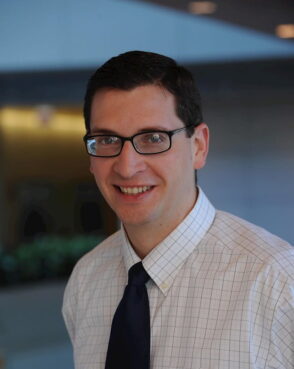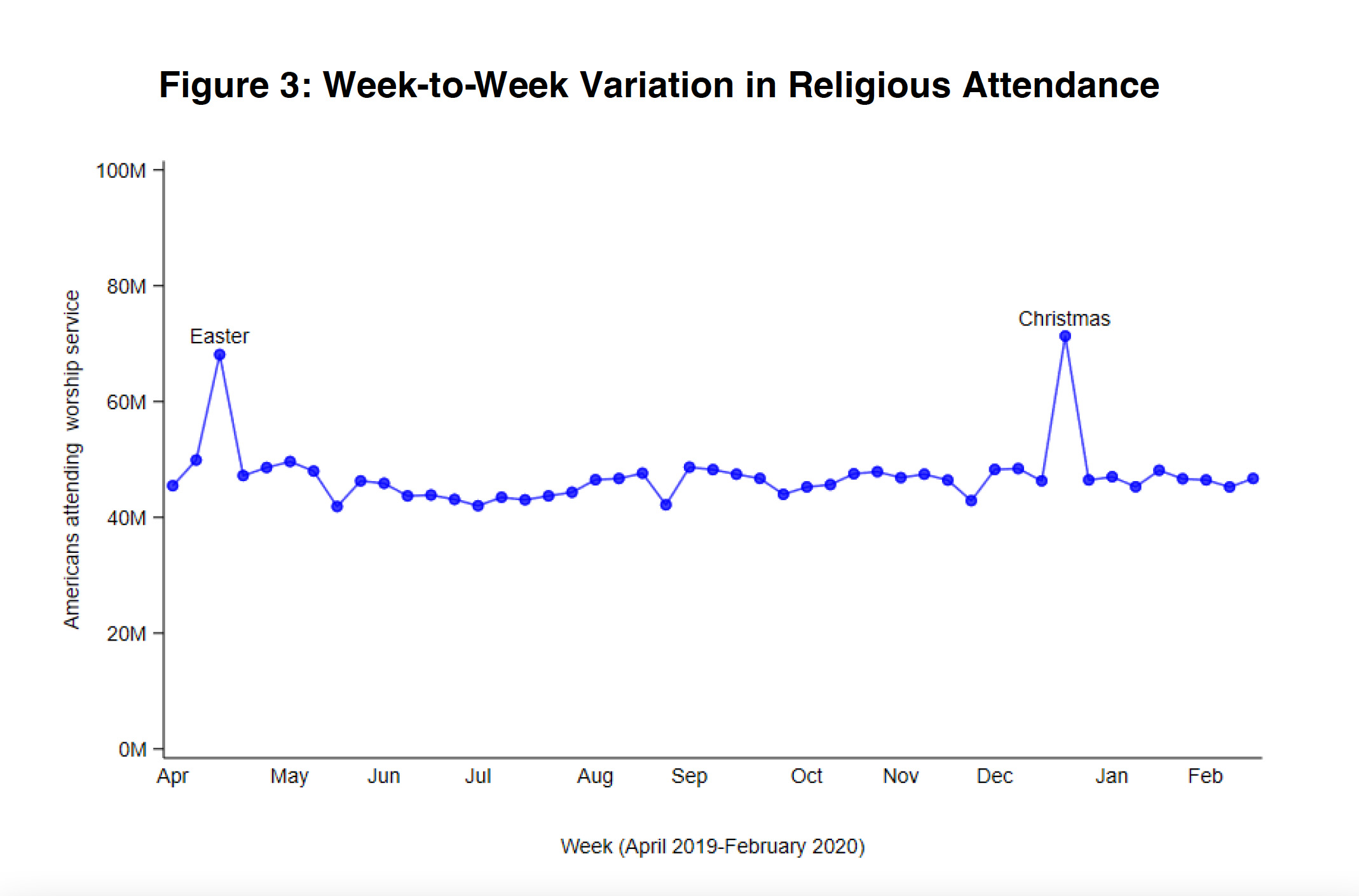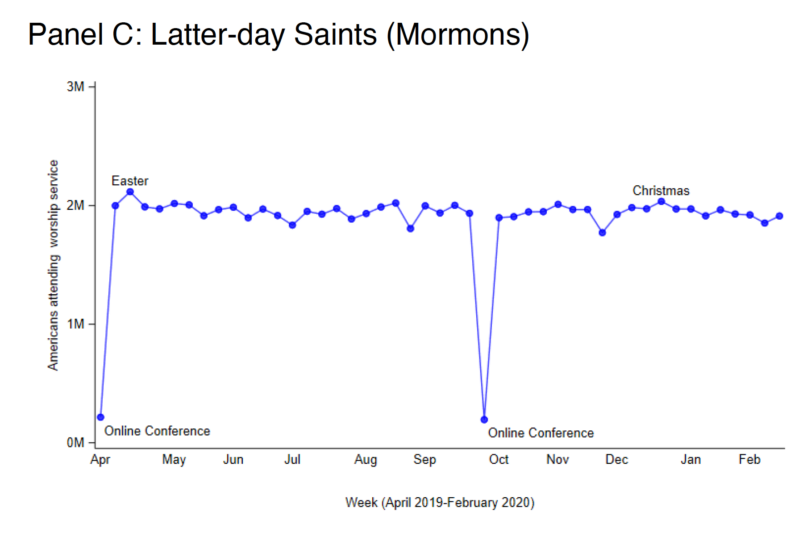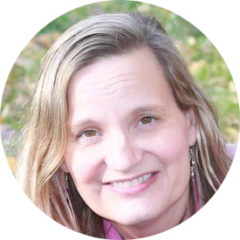(RNS) — More than three-quarters of U.S. members of the Church of Jesus Christ of Latter-day Saints describe themselves as attending church at least once a week, according to a recent study from the Pew Research Center.
Another new study, this one from B.H. Roberts Foundation, similarly found that 71% of Mormons who live in LDS areas of the U.S. attend church weekly, and 65% do who live outside those geographic strongholds.
Heck, my own research in the Next Mormons Survey showed very high weekly LDS attendance as well, measuring at 74% in 2016.
But what if we’re all wrong? Or at least, what if the self-reported data all these studies have relied upon presents an incomplete picture?
Scholars who study religion have long understood that the number of people who say they’re in church on a given Sunday is higher than the number who are actually there. For example, one famous 1990s study found that fully half of the Christians who called themselves weekly attenders were likely not.
That study relied on churches’ own attendance data to get at the truth, and the researchers even counted cars in parking lots. Now a scholar has come up with a far more sophisticated — and comprehensive — way of measuring people’s self-reported attendance against their actual behavior.

Economist Devin Pope. (Courtesy photo)
For the forthcoming journal article “Religious Worship Attendance in America: Evidence from Cellphone Data,” economist Devin Pope of the University of Chicago tracked the cellphones of 2.1 million Americans over nearly a year (from April 2019 to the pre-pandemic month of February 2020). Pope says smartphones that use location services, such as weather apps or Google Maps, allow our phones to track our whereabouts and that this information is pinged to cellphone towers every few minutes. Since more than 90% of Americans have a smartphone, there’s a startling amount of information available about where we are and what we’re doing.
Scholars have begun using this treasure trove of information to study various social and consumer issues. In 2016, for example, Pope was part of a research project that tracked how long various groups of people waited in line to vote across the country, finding that the wait times were longer in African American neighborhoods than elsewhere.
Now, he is mining this source to study religion. His findings measure the religious attendance of many different religious groups, from Protestants and Catholics to Muslims, Jews and Buddhists. But for this article, we’re going to focus on what he learned about Latter-day Saints. It’s a group he is particularly interested in, since he is an active member of the LDS Church himself.
On the one hand, far fewer Latter-day Saints attend church weekly than say they attend. And Pope adopted a generous definition of “weekly” attendance, giving people latitude for illness, travel and other circumstances that might keep them home from church. “If you went at least 36 weeks of the year, I call you a weekly attender,” he said.
Even with that extra leeway, there are only about a third as many LDS weekly attenders (.29% of the U.S. population) as the number who claim to be LDS weekly attenders in surveys (.87% of the US population).
Why is this happening?
“I think almost surely we’re seeing some social desirability bias, where people want to claim that they are weekly attenders and they’re just not,” Pope said. “But it feels good to answer yes to that (survey) question. LDS individuals show that same bias in terms of overclaiming attendance.”
On the other hand, they are overclaiming weekly attendance “less so than most religions,” he noted. People of all religions exaggerated their weekly attendance. For Protestants, it was by a factor of four, so a bit more than the LDS overreporting. But for some other religions, especially Catholics, Muslims, Jews and Jehovah’s Witnesses, the discrepancy was much higher.
As well, Mormons remain some of the most stalwart weekly attenders in America, even if it’s only a third of their claimed weekly attendance. About 15% of U.S. Latter-day Saints appear to be weekly attenders, which is triple the national average of 5%. In raw numbers, there are actually more LDS weekly attenders than there are Catholic weekly attenders, even though there are 14 times more Catholics than Mormons in the nation.
| US population | Latter-day Saints | |
| Attends at least once a month | 21% | 39% |
| Attends at least once a week | 5% | 15% |
“That surprised me a lot, actually,” Pope said. “I think it just shows that while our membership is small compared to many other religions, it is an incredibly devoted membership in terms of attending church.”

The religious attendance of all Americans as tracked by cellphone data, April 2019 to February 2020. (Graphic courtesy of Devin Pope)
Pope’s data can demonstrate other aspects of religious attendance as well. Most Christian groups, for example, show clear spikes in attendance at Christmas and Easter. That’s not the case for Mormons, who have a tiny bump — another clear sign that most of the just under 2 million people in the pews on a given Sunday are regular attenders.
Another thing that’s unusual about Mormons is that twice a year like clockwork, they go dark in terms of church attendance in their ward chapel buildings. That’s because of the Church’s semi-annual general conferences in the first weekend of April and October, which are streamed online and on BYU-TV.

The religious attendance of US Latter-day Saints as tracked by cellphone data, April 2019 to February 2020. (Graphic courtesy of Devin Pope)
The study has a wealth of other findings that will be of interest to Latter-day Saints. When they are in church, they stay longer than most religious groups do — 115 minutes, to be precise. That’s on par with Orthodox Christians and Jehovah’s Witnesses, but nearly twice the time spent by Catholics.
As well, Mormons had the lowest rates of going to strip clubs and liquor stores (yes, there is cellphone data on those activities, too). They were about average in going to fitness clubs and casinos.
One distinctive aspect of LDS congregations was that they were the least economically diverse of all religious groups. Pope, as an economist, said he was surprised by that finding.
“As someone who was raised in the LDS Church, I often heard that we make you go to a congregation in the area where you live, and that this creates more diverse congregations. Because otherwise if you pick your congregation, all the high-income people might go to one congregation and the lower-income individuals are left with a different congregation. So this is one of the things that surprised me a bit. As a member of the Church, I was a little bit hopeful that our congregations actually were super diverse, but they are not.”
To learn more about this, he dug deeper into the analysis by geographic area, thinking that maybe the homogeneity of Utah was skewing the results. However, “if you eliminate Utah — or even if you eliminate the Intermountain West — we remain one of the least diverse places of worship,” he said.
Weekly LDS attenders were, on average, a little wealthier than people who attend infrequently, which is a reverse of the pattern for most other religions.
“Those effects aren’t super strong, but they’re there,” Pope said. Regular LDS church activity can be time-consuming, and “it feels like those that are able to get there weekly are the ones who don’t have other things interrupting their lives in certain ways. They are often financially more stable.”
Pope was quick to discuss the potential limitations of using cellphone data, e.g., what happens when someone doesn’t take their cellphone to church? How do you measure the movement of small children who don’t own a phone? But despite the limitations, it is exciting to be able to study religious behavior using data beyond just surveys.
Pope’s article, which will be released in working paper form next week and then eventually published in an economics journal, is an example of a bold new frontier of how new data and methodologies can shed light on religious observance.
Related content:






